
Original Link: https://www.anandtech.com/show/2707
Introduction
As shown in our recent Entry-level Buyers' Guide, you can now build a decent entry-level PC for around $500 - including an LCD monitor and the Vista Home Premium OS. If you already have a monitor and OS, or use one of the free operating systems like Ubunti or another Linux variant, you can get your desktop system cost down to about $300. We don't recall a time when so much power was available in the computer industry for so little money.
Of course that $500 machine, while surprisingly capable for basic computer tasks, is certainly not the paragon for gaming, graphics, or raw computing power. As you move up the price scale you gain in all of those parameters. We started to beef up those areas in the bargain systems and reached prices closer to $1000. The next ladder rung is broadly defined as midrange. Most of our readers are looking to buy in the midrange category, which generally provides the most performance for the dollar and computing solutions with some staying power in the market.
Midrange can start as low as $1000 and extend all the way up to around $2000, which gives a lot of flexibility in terms of choosing components. In this era of declining prices and increasing value, the midrange also covers a wider area than in the past - just as we saw in the under $1000 segment. Our budget systems near $1000 were really representative of what we might have called midrange in the past. Similarly, our $2000 system is closer to what may have been defined as high-end in earlier guides.
It's fair to ask, then, why we haven't tossed the price classes for our guides and defined new ones. That option was considered, but the fact remains that high-end prices have not declined like midrange and entry prices. New architectures have also been recently introduced at the high-end, so the definition of high and mid are shifting as the Intel Core i7 and Phenom II move into our computing space. We are already seeing a few X58 boards that will be selling for around $200, which would allow a decent Core i7 build at around $2000. Similarly, you can build a very capable Phenom II box for that same $2000.
For today's Midrange Systems Guide we will put together two Intel systems and two AMD systems. The first pair are targeted for a complete system price of around $1500 - without monitor and OS that would be somewhere around $1200. This segment targets the best value possible with each component giving the overall best-bang-for-the buck in the midrange.
The second pair of systems target Midrange Performance. At about $500 more than Value Midrange, these $2000 complete systems invest that extra $500 in performance improvements. Without the 24" monitors and OS, the Performance Midrange systems would cost around $1600. The Midrange Performance segment is built around a powerful Intel Core i7 CPU or the fastest Phenom II you can currently buy. Both are very high performance for the money - and high performance by almost any other measure.
In the last few weeks we've looked at almost all the components you would need to build your new PC. This includes motherboards, memory, cases and power supplies, video cards, displays, and storage. Since we have already covered component classes and individual items in detail, you will find the above a useful reference to the components chosen in the system guides.
Intel Value Midrange
While Intel still owns the very top in CPU performance, the Phenom II has made AMD competitive in the upper midrange to the low high-end. As higher speeds are introduced for Phenom II, that CPU parity will likely move up the CPU scale. That means that midrange to low high-end is now also an area where you can choose Intel or AMD based on the unique features of each platform or expansion capabilities, rather than one brand dominating performance.
The Intel Value Midrange is built around a fast Intel Core 2 Duo CPU. For most applications and gaming, a faster Core 2 Duo is normally a better performance choice than a slower quad-core. CPU intensive applications like video manipulation do benefit from a quad-core CPU, which should be your choice if those applications are important to you. A few recent games are finally taking advantage of quad-core as well.
| Intel Value Midrange PC | ||
| Hardware | Component | Price |
| Processor | Intel Core 2 Duo E8500 Wolfdale (3.16GHzx2, 6MB L2) |
$188 |
| Cooling | XIGMATEK HDT-S1283 120mm Rifle CPU Cooler | $37 |
| Video | SAPPHIRE 100259-1GB Radeon HD 4870 1GB | $230 |
| Motherboard | Gigabyte GA-EP45-UD3P | $137 |
| Memory | OCZ Reaper 4GB (2 x 2GB) DDR2-1066 Dual Channel Kit, | $46 |
| Hard Drive | Seagate Barracuda 7200.11 ST31000333AS 1TB | $110 |
| Optical Drive | LG BD/HD DVD / 16x DVD+/- RW GGC-H20LK | $99 |
| Audio | Creative Sound Blaster X-Fi Xtreme Audio 7.1 Channels 24-bit 96KHz PCI | $50 |
| Case | COOLER MASTER RC-690-KKN1-GP ATX Mid Tower | $80 |
| Power Supply | PC Power & Cooling S75CF 750W SLI CrossFire Ready 80 PLUS Certified | $80 |
| Display | Acer H213H bmid Black 21.5" 5ms HDMI Widescreen 16:9 Full HD 1080P LCD Monitor (1920x1080) | $199 |
| Speakers | Logitech X-540 70 watts 5.1 Speaker - Retail | $79 |
| Input | Microsoft CA9-00001 Black PS/2 Standard Keyboard and Optical USB/PS2 Mouse - OEM | $16 |
| Operating System | Microsoft Vista Home Premium OEM | $99 |
| Bottom Line | $1450 | |
 |
The CPU is one of the fastest Core 2 Duo chips on the market. The E8500 at 3.16GHz is just one step below the fastest Core 2 Duo E8600 which clocks at 3.33GHz. It also overclocks exceptionally well, reaching 4GHz and even higher with relative ease. Because of this OC ability and the value goal of this system build, the E8500 has been matched with components that are also excellent choices for overclocking. The E8500 is plenty fast on its own, but if overclocking interests you this Intel Value Midrange will be ready for action - and ready to overclock to wherever your particular E8500 can go.
 |
The big brother to the UD3R selected in our under $1000 guide is the $137 Gigabyte GA-EP45-UD3P that has a similar feature set but adds a second x16 slot (in place of a PCI slot) for dual x8 CrossFire operation. The board provides an excellent overclocking platform along with great stability. If the second x16 slot is not important to you, we suggest sticking with the UD3R. This P45 chipset motherboard has earned its reputation as a sterling overclocker, while also maintaining excellent stability. It is a good match to the selected Core 2 Duo E8500 or an alternate quad-core Q8200 (2.33GHz).
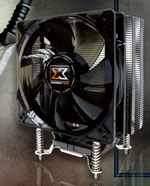 |
While the stock Intel cooler is adequate for modestly overclocking a Core 2 Duo, better cooling is needed to push the CPU to its limits. The Xigmatek HDT-D1283 120mm Rifle Cooler did very well in our cooling tests and it is a good match to the E8500. OCZ also markets a similar 120 Rifle cooler and either should work well in this system.
For this Value Midrange system, faster memory with more overclocking headroom was chosen. With the current OCZ rebates some of their best memory is available at truly bargain prices. The choice for the Intel system is an OCZ Reaper 4GB DDR2-1066 (PC28500) kit. With attached heatspreaders and the unique Reaper heatpipes and external heatsink, this 4GB kit is ready for overclocking. The base specs of DDR2-1066 at 5-5-5-18 are also impressive even if you never overclock. Value is good at the normal $76, but with the current $30 rebate the price is an easy-on-the-budget $46.
Value Midrange Common Components
While AMD and Intel architectures differ in sockets and sometimes memory configurations, there is more that is the same in the two systems than there is that is different. For that reason the Intel and AMD Value Midrange Systems share a number of common components.
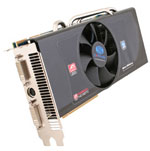 |
For video card best value we have paired the Sapphire Radeon HD 4870 1GB with both the Intel and AMD systems. As pointed out in the recent Holiday 2008 GPU Guide, the 4870 1GB is the minimum card we use internally for gaming comparisons. The Sapphire was our guide choice, but $230 seems the going rate for the 4870 1GB these days. It is available from MSI, Diamond, ASUS, HIS, Power Color, and others so you can shop for the best buy.
On the Intel system, the Gigabyte GA-EP45-UD3P motherboard provides a second PCI x16 slot. Video performance can be improved even further by adding a second Radeon HD 4870 1GB in CrossFire mode. You can also start with two 4870 512MB video cards that are now available for as little as $180 each from Power Color. This will provide 4870 CrossFire for a video card cost for both cards of just $360 total. The motherboard choice for AMD is the Foxconn A79A-S, which also provides multiple x16 slots for CrossFire. The same video options apply to the AMD Value Midrange system.
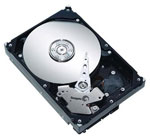 |
Hard drive capacity continues to grow, as you can see in our selection of the Seagate Barracuda 1TB drive (1000GB). While the Seagate 1.5TB drive was plagued with problems at its release, the performance and reliability of the 1TB Seagate has been excellent in our testing so far. For a price of around $100 the value is incredible. While there are differences between hard drives, outside of running benchmarks most people aren't likely to notice the difference in performance between Western Digital, Seagate, Samsung, Hitachi, and other major brands. All are worthy of consideration if the price per gigabyte (or terabyte) is right.
 |
We feel the optical drive for a best value midrange system needs to play Blu-Ray disks. The flexible LG GGC-H20LK has the ability to read both Blu-Ray and HD format disks. It also can burn DVDs at 16x speed in single or dual-layer formats. It cannot, however, burn 25GB/50GB Blu-Ray disks; adding that capability raises the cost to around $200 to $250. BD burners like the $200 LITE-ON 4X BD-R 12X DVD+R 4X Blu-ray DVD-ROM or the $230 LG 6X Blu-Ray Burner GGW-H20LK are good choices.
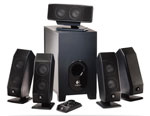 |
Cases are often very personal choices when it comes to features, but the Cooler Master RC-690-KKN1-GP is one of our favorites and it is also very well regarded by our readers. It comes standard with three 120mm fans for excellent cooling and low noise, and the power supply mounts in the bottom of the case. Audio, USB, Firewire, and eSATA ports are on top of the case, which we find an ideal location. The front bays are also ventilated metal mesh for cooling and appearance. If you prefer a more traditional case configuration, the Cooler Master Mystique, also selling for $80, mounts the PSU on top, provides font panel jacks, and is loaded with expansion ports and two 120mm fans.
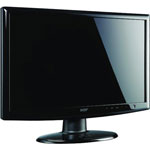 |
The last major component to discuss is the display, and here the tilt was toward best value at full 1080p HD (1920x1080) resolution. The new class of 16:9 21.5" LCD monitors provide true 1080p resolution at the break-through price of just $199. That stellar value shows just how far LCD technology has progressed. If your budget allows, or you just prefer a slightly bigger screen at the same resolution, you can move up to a 24" 16:9 1080p LCD that is selling today for around $300. Alternately, you can downgrade the resolution to 1680x1050 for slightly larger pixels (i.e. more readable text) if you purchase a 22" LCD and save a bit of money.
While the Creative Sound Blaster X-Fi Xtreme Audio is not the best sound card on the market, it is definitely tops in game compatibility. This Creative X-Fi card does a good job with audio, won't break the bank at $50, and it is a great choice for either set of powered speakers. Some would argue that onboard sound is all you need for a $1500 system, and if you are inclined to agree or have a really tight budget, you can save $50 on either the Intel or AMD Value Midrange builds just by using onboard sound.
 |
The Logitech X-540 has been a perennial favorite of users as a reasonably priced but good performing, powered 5.1 computer speaker system. It will certainly not challenge the performance of a separate Dolby amplifier powering audiophile speakers, but it will provide surprisingly good sound for the price.
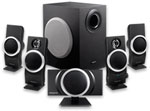 |
The Creative Inspire T6100 76 Watts 5.1 Speaker System is a similar powered speaker system that is selling at Amazon for just $57. The Creative speaker system is our choice in the AMD Value Midrange system, but either speaker system is a good choice for these Value Midrange builds.
Our choice for the top of the midrange is the well-regarded Logitech G51 system. This is mentioned only because the G51 is now just $90 after a $40 rebate, so if you want a better speaker system your net cost for choosing the G51 instead is just $10 more than the Logitech X-540 or $33 more than the Creative Inspire T6100.
 |
These are clearly desktop systems, so the keyboard and optical mouse are the basic Microsoft OEM kit. If you have more specific needs or a favorite gaming mouse you likely know exactly what you prefer. The Microsoft pair is very capable for most. For greatest compatibility, we have chosen Microsoft Vista Home Premium OEM as the Operating System. Unless you have specific networking and special enterprise security needs there is no real reason to pay the extra for Vista Ultimate. We personally recommend the 64-bit version now, but a select few applications still need a 32-bit OS (i.e. Dragon NaturallySpeaking and GameTap to name just two).
AMD Value Midrange
The AMD Value Midrange system is built around the new Phenom II 920 2.8GHz quad-core CPU. Until the introduction of Phenom II last week the 9950 was the top AMD processor you could buy and it was an excellent value. With the Phenom II shipping at introduction AMD has wasted no time in lowering the street price of the 9950, making a great CPU an even better value at $150. Still, the Phenom II offers better raw performance than the 9950 and much better overclocking. The Phenom II architecture is more like Intel's latest Core i7, and while the i7 is still the fastest current CPU the Phenom II competes better than the Phenom with i7. For those reasons we really wanted to select the Phenom II 920 for the AMD Value Midrange.
This seemed a bit of a stretch given a budget of $1500 until Foxconn told us they were reducing the price of their 790FX board by $60 and offering an additional $60 rebate. With a new lower price of $105 for the excellent Foxconn 790FX board, it became a much easier task to put together a hot top-performing Phenom II system for under $1500 complete.
| AMD Value Midrange PC | ||
| Hardware | Component | Price |
| Processor | Phenom II x4 920 (2.8GHz x4, 4x512KB L2, 6MB L3) |
$235 |
| Cooling | Tuniq Tower 120 | $54 |
| Video | Sapphire Radeon HD 4870 1GB | $230 |
| Motherboard | Foxconn A79A-S AM2+/AM2 AMD 790FX | $105 |
| Memory | 4GB DDR2-1066 Patriot Viper PVS24G8500ELKN | $48 |
| Hard Drive | Seagate Barracuda 7200.11 1TB | $110 |
| Optical Drive | LG BD/HD DVD / 16x DVD+/- RW GGC-H20LK | $99 |
| Audio | On-Board ADI AD2000B 8-channel HD Audio | $0 |
| Case | COOLER MASTER RC-690-KKN1-GP Black ATX Mid Tower | $80 |
| Power Supply | CORSAIR CMPSU-650TX 650W SLI Ready CrossFire Ready 80 PLUS Certified | $80 |
| Display | Acer H213H bmid Black 21.5" 5ms HDMI Widescreen 16:9 Full HD 1080P LCD Monitor (1920x1080) | $199 |
| Speakers | Creative Inspire T6100 76 Watts 5.1 Speaker System | $57 |
| Input | Microsoft CA9-00001 Black PS/2 Standard Keyboard and Optical USB/PS2 Mouse - OEM | $16 |
| Operating System | Microsoft Vista Home Premium OEM | $99 |
| Bottom Line | $1412 | |
 |
The Phenom II 920 is the lowest priced Phenom II CPU but it is still clocked at 2.8GHz, just a bit below the top Phenom II 940 at 3.0GHz. Conventional wisdom, even after the relaunch of the Phenom earlier last year, was that Phenom finally was overclockable (many reached 3.4GHz with the 9950BE) but that Phenom was not in the same overclocking league with Core 2 or i7. Phenom II shatters that old saw, as we reached 3.9GHz at 1.52V with the Phenom II 940. The 920 may or may not be an even better overclocker, but only time can answer that question. Overclocked or not the Phenom II is very competitive with current Intel offerings, and this system built around the Phenom II 920 does not really have any Core i7 competition. Intel's cheapest i7 is their 920, but pricing begins at $295 for that CPU.
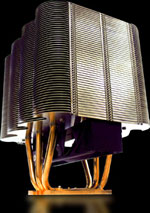 |
The Tuniq Tower 120 can move a lot of air and it is superb at dropping temperatures in ambitious overclocks. It has been on sale recently for as little as $45, but the best price we could find today was $54. If the Tuniq Tower 120 won't cool it then the overclock is not likely doable. At moderate to low fan speeds the Tuniq is quiet, but it can become quite loud at maximum speed. Find a nice balance of fan speed and cooling and you will find the Tuniq an excellent choice.
 |
The component that made the $1500 Phenom II system possible is the Foxconn A79A-S, which is compatible with AM2+/AM2 and is based on the AMD 790FXchipset. The selling price of this Foxconn A790FX board has been $224 until Foxconn dropped the price $60 and then added on a $60 rebate. That drops the final price to a budget pleasing $105. This Foxconn board suffered from early BIOS problems, but the last few versions of the BIOS are very capable and extremely stable. We have no problem recommending the current Foxconn A79A-S motherboard as the heart of a stable and very overclockable Phenom II system.
Memory could be the same OCZ choice as the Intel Value Midrange, but another potential 4GB kit is featured in the AMD system build. The 4GB Patriot Viper PVS24G8500ELKN provides solid DDR2-1066 performance at 5-5-5-15 timings at DDR2-1066. With the current $25 rebate the final price is just $48.
The rest of the component selections are shared between the Intel and AMD Value Midrange systems. You can find more information on these component choices on page 3, which details the common system components.
Comparing our $1500 systems, we find that AMD is likely the best performer at this price point of $1500. It has been a long time since we could say this about a midrange system, and it is very good for all of us that Phenom II is competitive with i7 - and cheaper than i7. However, as AMD finally competes in the 45nm space Intel is ready to soon move to an even smaller die size. Still, no matter how long or short the parity, the Phenom II competition is good for all buyers.
With the prices of computer components generally trending down, both our AMD and Intel Value Midrange system builds came in closer to $1400 than our original $1500 budget. This gives you some room to customize some of the components to your liking - such as adding a keyboard or laser gaming mouse.
Intel Performance Midrange
In recent months we have said in CPU recommendations that Intel and AMD enjoyed parity in the price ranges and processor speeds where they competed. Of course, AMD did not compete at the top speeds. We normally added that Intel still enjoyed a significant overclocking advantage if that was an important feature for you.
Things were shaken up quite a bit with the introduction of the new Intel Core i7 Socket 1366 CPU. Phenom did not compete nearly as well against the Core i7, but Phenom II is now leveling that playing field - in the upper midrange to low high-end where Phenom II now has competing speeds. In addition, the Phenom II 45nm finally removes the last real impediment to choosing AMD in this price range as it overclocks very well indeed and gives Intel a run for the money - clock for clock.
That makes choosing between the Intel Core i7 system below or the AMD Phenom II system on the next page a more difficult decision than it has been in quite a while. Both systems contain parts that have been chosen for their excellent overclocking abilities, and both motherboards can deliver the 3.8GHz+ overclocks that Core i7 and Phenom II are capable of reaching.
| Intel Performance Midrange PC | ||
| Hardware | Component | Price |
| Processor | Intel i7 920 Nehalem Socket 1366 (2.66GHzx4 4x256KB L2, 8MB L3 Cache) | $295 |
| Cooling | Vigor Monsoon III LT for Socket 1366 | $60 |
| Video | EVGA 01G-P3-1282-AR GeForce GTX 280 SuperClocked Edition 1GB | $320 |
| Motherboard | GIGABYTE GA-EX58-UD3R LGA 1366 Intel X58 ATX | $185 |
| Memory | G.SKILL 6GB (3 x 2GB) DDR3-1333 (PC3 10666) Triple Channel Kit | $145 |
| Hard Drive | Seagate Barracuda 7200.11 ST31000333AS 1TB | $110 |
| Optical Drive | LG BD/HD DVD / 16x DVD+/- RW GGC-H20LK | $99 |
| Audio | ASUS Xonar DX 7.1 | $90 |
| Case | Antec Nine Hundred Black Steel ATX Mid Tower | $100 |
| Power Supply | SILVERSTONE ST70F 700W SLI Ready CrossFire Ready 80 PLUS Certified Modular Active PFC | $100 |
| Display | ASUS VW246H Black 24" 2ms(GTG) HDMI Widescreen LCD Monitor (1920x1080) | $290 |
| Speakers | Logitech G51 155 watts RMS 5.1 Surround Sound Speakers - Retail | $90 |
| Input | Microsoft CA9-00001 Black PS/2 Standard Keyboard and Optical USB/PS2 Mouse - OEM | $16 |
| Operating System | Microsoft Vista Home Premium OEM | $99 |
| Bottom Line | $1999 | |
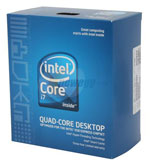 |
The i7 920 is the lowest priced Intel Core i7 you can currently buy - the other two choices are in the $600 to $1000 price range. Don't assume, however, that the 920 is not a powerful processor. The i7 920 is capable of reaching the performance levels of the top i7 CPUs, because it has also proved to be a dynamite overclocker for those who care about that, and that are also willing to provide decent cooling to the i7 920.
You start with a processor that is 30% faster in some parameters than a Core 2 Quad, and then you find you can also overclock this 2.66GHz CPU to 3.8GHz to 4GHz with careful tweaking and better cooling. As you saw in our Phenom II Launch review, the 920 reached as high as 3.8GHz at stock voltage and 4.0 GHz when overvolted to 1.35V. That is a 50% overclock. You will certainly be very happy with Core i7 base performance, but if you are interested in overclocking you will be ecstatic with this new CPU.
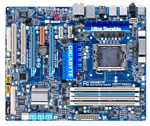 |
The Gigabyte GA-EX58-UD3R has the distinction of being the lowest priced X58 chipset motherboard you can currently buy. Others will soon join that $200+/- club shortly providing more X58 value choices. You probably also noticed that Gigabyte is trying to get as much mileage as possible from their UD3R designation. It seems reasonable to hold on to a good name as much as possible. AnandTech is in the process of testing this value Gigabyte board, and more info will come your way soon. Early user reports are very favorable, including great reports on overclocking. That was enough positive news to choose this Gigabyte for the Performance Midrange Intel System.
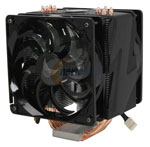 |
Several well-known coolers offer optional adapters for the Intel Socket 1366, but the cooler choice to mate with the Gigabyte X58 board is the Vigor Monsoon III LT. The last time a Vigor Monsoon was reviewed it was an effective but loud TEC (Thermo Electric Cooling) design. This Monsoon is a standard vertical heat-pipe air cooler, with effective and quiet push-pull cooling. The Monsoon appears a good match to the OC capabilities of the i7 920.
 |
At present, most of the editors at AnandTech prefer the performance of GPU solutions from AMD/ATI these days… that is, except when running Intel Core i7. The X58 chipset/Core i7 works best with an NVIDIA video card and drivers. AMD is aware of the issue and is working to provide improved drivers for the i7 platforms, but for now the choice for i7 system video card is the (deep breath…) EVGA 01G-P3-1282-AR GeForce GTX 280 SuperClocked Edition 1GB. This EVGA card comes factory overclocked to a core clock of 621MHz and an effective memory clock of 2268MHz. This video card really is not the equal in performance of the 4870 X2 used in the AMD Performance Midrange system, but the stability and trouble-free operation makes up for the small performance loss - at least for today.
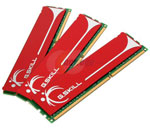 |
The Intel i7 system includes the G.Skill triple-channel DDR3-1333 6GB memory kit. To be blunt, most of the 1333 3x2GB triple-channel kits use the same memory chips, although there are sometimes differences in the SPD chip on the DIMM. We chose the G.Skill on the basis of best price for a 6GB triple-channel DDR3-1333 kit from a known brand. You can select from a number of quality memory suppliers, but make sure to include their warranty and customer service reputation in your decision.
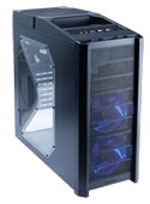 |
The case receives an upgrade with the selection of the well-regarded Antec Nine Hundred that bottom mounts the power supply and provides plenty of internal storage. Cooling is provided by 120mm fans and a massive 200mm top exhaust fan.
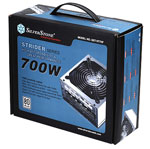 |
The power supply is the well-regarded Silverstone ST70F 700W SLI/CrossFire Ready 80 PLUS Certified modular PSU. The Silverstone 700W has made almost everyone's top performance list for a PSU and it is a good buy at its regular selling price. At the current selling price of $100, it is an outstanding value. The Silverstone is a modular power supply with the flexibility offered by custom cable selection and arrangement.
 |
The ASUS Xonar DX 7.1 is one of the top-performing audio cards on the market today. It is a great upgrade to the onboard sound if you want better sound quality. Game compatibility is excellent, but most game creators assume everyone has a Creative Labs sound card.
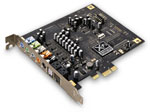 |
If your main reason for having a powerful i7 computer is gaming, you may prefer the Creative 7.1 Sound Blaster X-FI Titanium at the same price that we used in the AMD Performance Midrange system. In our opinion the sound quality is better on the ASUS or an HT sound card, but game compatibility will never be a question with a Creative Labs sound card.
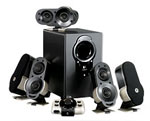 |
The speakers have been upgraded to the Logitech G51 155 watts RMS 5.1 surround sound speakers. They are selling for $90 after a $40 rebate, which is a great value on these well-regarded powered speakers.
 |
The LCD display resolution is the same 1080p HD resolution chosen for the Value Midrange systems. The size of the monitor increased to 24" so everything on screen is just a little larger. The ASUS VW246H 24" provides the preferred HDMI input, as well as DVI and an analog VGA port. Panel speed is rated at an incredible 2ms, but we have found most current LCD panels perform similarly and the speed rating does not really guarantee very much. The ASUS monitor provides a sharp image, good colors, and fast panel speed at a very good price of $290. For more information on what matters in a monitor and how to read LCD specifications, take a look at our Holiday 2008 Display Guide.
The remaining components are the same as our Value Midrange systems. The hard drive remains a 1TB Seagate. The optical drive is the LG BD. The Microsoft OEM keyboard and optical mouse provides input, and Vista Home Premium OEM runs the system. For more information on these components, refer to page 3.
AMD Performance Midrange
The introduction of Phenom II has made putting together an AMD Performance Midrange a joy again. While the Phenom was an honest competitor at the price points where AMD chose to compete, the poor overclocking of the AMD Phenom compared to Intel Core 2 dual/quad-core processors was always a nagging reality. Phenom II changes all that, and AMD in 45nm clothes is once again a screaming overclocker. We reached 3.9GHz in our testing for the Phenom II launch with a Phenom II 940 CPU. That same CPU is the starting point for our AMD Performance Midrange PC.
| AMD Performance Midrange PC | ||
| Hardware | Component | Price |
| Processor | Phenom II x4 940 Black Edition (3.0GHzx4 125W 4x512KB L2, 6MB L3) |
$275 |
| Cooling | Tuniq Tower 120 | $46 |
| Video | SAPPHIRE 100251SR Radeon HD 4870 X2 | $400 |
| Motherboard | ASUS M3A79-T Deluxe | $189 |
| Memory | G Skill DDR2-1100 (PC2-8800) 4GB Memory Kit F2-8800CL5D-4GBPI | $90 |
| Hard Drive | Seagate Barracuda 7200.11 ST310000333AS 1TB | $110 |
| Optical Drive | LG BD/HD DVD / 16x DVD+/- RW GGC-H20LK | $99 |
| Audio | Creative 7.1 Sound Blaster X-FI Titanium | $90 |
| Case | Antec Nine Hundred Black Steel ATX Mid Tower | $100 |
| Power Supply | SILVERSTONE ST70F 700W SLI Ready CrossFire Ready 80 PLUS Certified Modular Active PFC Power Supply | $100 |
| Display | ASUS VW246H Black 24" 2ms(GTG) HDMI Widescreen LCD Monitor (1920x1080) | $290 |
| Speakers | Logitech G51 155 watts RMS 5.1 Surround Sound Speakers | $90 |
| Input | Microsoft CA9-00001 Black PS/2 Standard Keyboard and Optical USB/PS2 Mouse - OEM | $16 |
| Operating System | Microsoft Vista Home Premium OEM | $99 |
| Bottom Line | $1994 | |
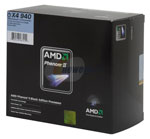 |
You can read our review of the Phenom II X4 for additional information. The Phenom II 940 X4 at 3.0GHz is the fastest of the currently shipping AMD Phenom II processors. The Phenom II is very similar in L2/L3 cache configuration to the recently introduced Intel Core i7. Performance is also comparable to the best Intel chips. As the first 45nm AMD processors the Phenom II also overclocks very well, finally approaching the overclocking levels enjoyed by Intel since the introduction of the Core 2 Duo.
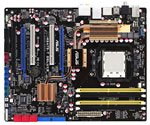 |
We've paired the Phenom II 940 with the superb ASUS M3A79-T Deluxe. At $190 the ASUS is not cheap or even a great value for a 790FX/SB750 setup, but it is one of the most loaded and best performing AMD boards we have used this year. ASUS loads the board with Gigabit LAN, IEEE 1394 support, four PCI-E x16 slots (dual x16, tri x16/x8/x8, or quad x8), two PCI slots, a single eSATA port, and six 3Gb/s SATA ports featuring RAID 0/1/10/5. The M3A79-T Deluxe also works very well with Phenom II and end-users will not be disappointed in performance or overclocking capabilities.
The ASUS also includes superb onboard sound with the ADI AD2000B 8-channel HD audio. This is probably the best onboard sound solution we have tested so far. A Creative 7.1 Sound Blaster X-FI Titanium audio card was included in the components mostly for game compatibility. You can save $90 and use the onboard ADI sound without sacrificing much if anything in sound quality.
 |
The GPU choice is the top-performing Sapphire 100251SR Radeon HD 4870X2. This dual-GPU card is an exceptional performer on the 790FX chipset, as you would expect. The selling price has been around $500, but with current promotions you can buy this Sapphire 4870X2 for just $400. That is an exceptional buy that delivers top performance at a very fair price, and if you ever want more gaming power a quad-GPU (two 4870X2 cards) is an option, albeit one we don't really recommend unless you have a 30" LCD.
The Tuniq Tower 120 cooler was also used on the AMD Value Midrange System described on page 4. The rest of the components are the same as the Intel Performance Midrange PC. This includes the Seagate 1TB hard drive, the LG GGC-H20LK BD/HD reader and 16X DVD burner, the Antec Nine Hundred case, the Silverstone 700W PSU, the Logitech G51 powered speakers, the ASUS 1080p 24" 1920x1080 LCD Monitor, the Microsoft OEM keyboard/optical mouse, and Microsoft Vista Home Premium OEM. You can find more information on these choices on the previous Intel Performance Midrange page or on page 3.
Final Words
Most users that email questions about building a computer system are planning to build a midrange computer system. With a broad price range of $1000 to $2000, this covers a huge number of potential choices. With the launch of Phenom II just a few days ago, all of our thinking about systems in this price range was rearranged. Hopefully you are the beneficiary of the refresh in our system thinking.
Prior to Phenom II we had prepared a Value Midrange AMD system using our favorite AMD 9950 Black Edition. We did not really have an AMD system to present at the $2000 Performance Midrange price point because AMD had no offerings that competed well in that arena. However, we now have a complete Phenom II 940 system at the $2000 price point that will give the competing Intel Core i7 920 a real run for the money - even when overclocked. At the $1500 price point the AMD Phenom II system based on the Phenom II 920 will likely be the performance winner, since Intel has no real Core i7 offering that is cheap enough for a complete balanced system at $1500. At least that is true this week.
As those involved in this industry quickly learn, things can change very fast in the computer business. AMD is competitive again and we are happy to see Phenom II competing so well. Of course, Intel's 45nm Penryn quad-core chips also compete quite well with Phenom II, so the final choice can really go any of three directions.
The current world economic woes are having their impact on the computer industry as well as many other industries. As often happens in economic times such as these, some players will cease to exist. As also happens, price competition often becomes fierce and the large and strong are more able to play within these guidelines. It would be a mistake to read these economic comments as doom and gloom because there is a huge silver lining to this story. Today you can get more for your money than ever in a computer system. The contrarians among you will buy now for the value and be rewarded with terrific performance for their investment.
As you saw in the tables, our AMD and Intel Value Midrange systems came in closer to $1400 than to $1500. Both are complete systems and include a fast Core 2 Duo 3.16GHz CPU based on 45nm technology or a fast AMD Phenom II 2.8GHz quad-core based on 45nm technology. Both systems feature AMD 4870 1GB graphics, 4GB DDR2-1066 memory, a 1TB hard drive, audio card, powered speakers, a custom case, and quality 80 Plus certified 650W power supply, a Blu-ray/HD player/DVD burner, Vista OS, keyboard/mouse, and a 1080p LCD monitor. That is a lot of value and performance for the price. For those that already have the OS, speakers, keyboard/mouse, and monitor you are talking base component costs of less than $1100 for these very competitive systems.
There is no doubt that our $2000 complete systems easily occupy what would have been considered high-end just a short time ago. The Intel Performance Midrange is powered by a Core i7 920 that overclocks extremely well if that is your choice. 4.0GHz is a very doable and stable overclock. The AMD Performance Midrange is similarly powered by the top Phenom II 940, a 3.0GHz quad-core that reached 3.9GHz in limited OC testing for the AnandTech launch article. Both performance systems feature upgrades to almost all of the capable components in the Value Midrange offerings. This includes a 24" monitor, an upgraded case/700W power supply, and 4870X2 graphics or NVIDIA SuperClocked 280GTX graphics,
The point of all these component selections should be very clear. Now is a great time to build a Value Midrange or Performance Midrange system, with either an Intel or AMD core. The bang for the buck is as good as we have ever seen in computer space. You can build the latest Intel Core i7 or AMD Phenom II computer system for less than $2000 - with some systems costing less than $1500. If you already have a monitor and keyboard/mouse/speakers you can build a balanced base i7 system for less than $1600, or a Phenom II for less than $1100. And those are some pretty good silver linings.







